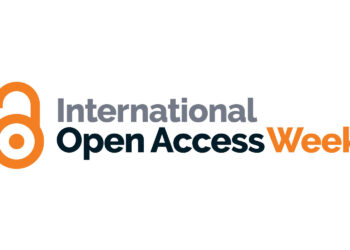I was invited to talk at the Association of American University Presses (AAUP) annual conference this year. The general topic was (hold onto your seats) “Sustainability and the Future of Scholarly Communications.” Presumably after solving this one, we were to go off and plug the floor of the Gulf of Mexico and settle the conflict in the Middle East once and for all.
As I noted in my presentation, I am not a big fan of the concept of sustainability. It implies stasis, as though what we have is what we want to have. For most of the university presses that participated in the conference, it’s hard to believe that the current situation is very attractive, with ongoing reductions in library purchases of monographs and increased pressure by university administrators on press subsidies.
Is this what we want to sustain? I think not.
For this reason, I posited five stages to book publishing and proposed that the way to become “sustainable” (by which, presumably, we mean “economically viable”) was to innovate ourselves into a more attractive position. Thus, from Stage One — the world of legacy print publishing — we move over time to Stage Five, when we begin to publish books on a subscription basis directly to consumers (ebooks, of course) and reap the considerable financial benefits of the subscription business model.
The AAUP has posted the slides for the presentation at SlideShare:
The text of the presentation is at the AAUP Web site.
Perhaps my greatest surprise was the response to one of my remarks, which, to be blunt, seems to me to be incontestable: that 5 years from now, the share of library purchases of scholarly materials would be less than it is today. Whether library purchases will decline in absolute numbers is another matter, but as a matter of market share, the diminishing role of libraries seems to me to be a hard thing to take exception to (at least, that is what librarians keep telling us — that they are out of money and don’t have the support of university administrators).
I will be revising “Stage Five Book Publishing” for formal publication in the fall and hope to incorporate readers’ comments.
Discussion
10 Thoughts on "Stage Five Book Publishing — How to Go Beyond “Sustainability” and Into “Viability”"
Interesting post, Joe. Your note about the response you received struck a nerve. I gave a talk at a library group and was asked how publishers were viewing libraries as customers, and responded that I think publishers are looking beyond the libraries for other solutions. The group was aghast, even though I noted that this is because library budgets are shrinking, librarians themselves say budgets are unlikely to rebound, and library sales can’t keep pace with inflation, much less the growing expenses of digital offerings.
I felt awful saying these things, but also realized I had to say them. And largely, I was only reciting the library message back to them.
It might be better to refer to these as five markets, not five stages. Stages suggests progressive, total replacement. Even stage 1 — physical books and bookstores — may always be a major market. By analogy, there are more horses in the USA today then there were in 1900. But your typology is quite useful.
Your outline includes Red Herrings but I don’t see them discussed.
Joe, it’s an interesting set of ideas, and I agree with David in the sense that the market probably remains for each stage, but is different than when it was dominant. I don’t have the benefit of your presentation comments which may have covered my points below.
I’m not sure that we’ll experience a complete elimination of some of the factors that your chart implies. For instance in stage 2 which is characterized as Amazon, you eliminate the bricks and mortar property – you had labeled this as retail outlet, I would agree. But bricks and mortar exist with the Amazon model, they’re just moved up the delivery chain from retail to wholesale and they become big warehouses.
In the same way, I think we’ll always have some kind of discreet object; it may not be a book, it may be a chapter or set of chapters, but there will be some differentiation of content which will help the end users decide what they want to obtain and read.
I’d also be surprised if print is actually eliminated in any of the categories. It may transition away from being provided by the publisher to being provided as POD from a different source, or even by the end user, but I think it will still exist.
I think you’re right about sustainability in this context. Publishers shouldn’t focus on maintaining the status quo, but should explore new ideas. As long as the market is willing to pay a fair price for a product in a certain medium, we should be willing to supply it, but we also need to test alternatives which I think your presentation suggests.
Great piece Joe, definitely some good food for thought. I’d characterize “sustainability” not as a goal, but instead as a basic requirement. It’s not something one should strive for, it’s something that must be in place in order to set goals and strive. As Geoff Bilder said at the recent SSP Meeting, for a not-for-profit, breaking even means failure. Even a not-for-profit must make a profit in order to invest in future ventures and weather any storm that comes along.
The other term I might argue about though, is “subscription”. I’m not sure these types of services are as inevitable as you think. So far, at least in the music arena, consumers have thoroughly rejected any paid subscription service. The reason people like Pandora or Spotify is that they’re free. There is no proven market for music subscriptions, certainly not in comparison with the market for music purchases. I worry that readers are going to have a similar response, that they’re going to want to “own” what they’ve paid for, and calling something a “subscription” may have negative connotations, even if it means they keep what they’ve bought. It’s a loaded term in some ways.
Your thoughts on stage 4 and the silo-ing issue are also interesting. Have there been any studies on book buyer behavior that shows they’re more likely to go to Google when they’re ready to buy a book, rather than directly to somewhere like Amazon? I know that I do the latter. It’s a subject that came up in the comments on Kent’s recent post about the demise of the browser in favor of individual apps. Just as scientists read articles, not journals or publishers, book readers read books and authors, not publishers. For your vision of stage 4 to come through, we’re either going to need to see a shift in book-buyer behavior, or something like Brewster Kahle’s proposed BookServer, which would make the lines in between publishers invisible but still allow direct sales.
Stage 5 did remind me of two projects we’ve been experimenting with, Cold Spring Harbor Protocols and Cold Spring Harbor Perspectives in Biology. Both sprang from long-running book publishing programs, one based on our lab manuals published over the last 35 years, the other based on a monograph series dating back even further. Each features a broad collection of material as a subscription product, with new material continuously added as new manual or monograph chapters are written for books that are in progress. Readers still have the option of purchasing individual volumes in print, but the better value is to be had in the entire collection. Reader and author response has been strongly positive for both.
I heard Joe’s excellent presentation at AAUP. I wanted to point out another objection that came up in the Q&A (in addition to the one that Joe cites in this post) that I think is a dangerous trap: “We tried subscriptions and they didn’t work.” Note the past tense. This is very shortsighted. The environment / ecosystem is changing rapidly. One thing I pointed out in the Q&A is that the increasing importance of comment and dialog around intellectual content — especially the kind of dialog that would be likely around a book or books in a specific scholarly area — really lends itself to a subscription model, where you aren’t just buying a fixed and finished chunk of content, you could (if the publisher provides this capability) see and participate in the evolving dialog about that content (and related content) and even see how that particular “chunk” may evolve over time. The best concrete example of this, of course, is what O’Reilly has done. But I think especially in the scholarly world (and by that I _definitely_ mean the humanities and social sciences that tend to dominate AAUP, not just STM), the appeal of a subscription model for a body of related content and the dialog around it is a VERY compelling model for the future. It provides steadier, more predictable revenue; you know who your customers are; and you can watch what your customers are _thinking and saying_, if you enable this sort of dialog as part of the model, which is arguably the biggest benefit of all to the publisher.
One other key point: Joe is talking about END-USER subscriptions. This is a whole different dynamic from institutional subscriptions or library subscriptions that are the current paradigm — and what people may have tried (and failed at) in the past.
I agree with Joe’s analysis – although I am somewhat sceptical about end-users subscribing personally. The one key point that Joe made that jumps out is the growing importance of metadata as the stages succeed one another. This is something we’ve experienced with at OECD. We publish around 600 books a year (in all languages) so we used to create, manage and distribute 600 sets of metadata when we were stage one publishers. We are now stage 1 through 5 publishers and over the past twelve months we’ve created and distributed 12,000 sets of metadata associated with our 600 books because we now create metadata at the level of chapters and charts/tables within chapters as well as sets of metadata for e, p and pod editions/channels. We could do more, but are running into capacity limits with our existing systems. This explosion of metadata is probably the single biggest challenge we’ve faced as we moved up the stages.
I am curious about this Toby, because my feeling at OSTI is that metadata is obsolete. We tend to focus on full text search for our users. We just added semantic vector “more like this” search where the user identifies one report and the system finds all the similar ones, even if they do not use the original search term.
What kind of metadata are you creating at the chapter level? It sounds laborious. But then we have something like 250,000 publications, mostly research reports, so ours is really a different case.
Wouldn’t you say that Questia (http://www.questia.com/Index.jsp) already operates at the “stage 5” of your model ?
As this press release (http://www.prnewswire.com/news-releases/questia-brings-library-of-copyrighted-books-to-iphone-and-ipod-touch-61290892.html) puts it, “Questia Media, Inc. partners with over 325 leading publishers to provide the world’s largest online academic library and research resource to end consumers on a subscription basis”
(I’m a librarian working in a French business school. We feel we need to be aware of new developments in publishing since everything is changing so fast… Thank you for your very interesting post)
Questia is a great service, but I wouldn’t say it fits the paradigm I was describing. My presentation was addressed to publishers. Questia is an aggregator, not a publisher. Questia is indeed engaged in a direct relationship with end-users, but upstream it is dependent on its own supply chain, the community of publishers.



